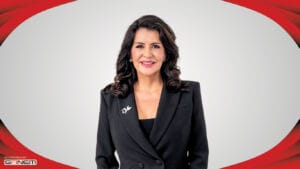The rising cost of providing health insurance to employees is one of the top financial pressures facing owners of privately-held, small and midsize companies, according to a recent Enterprise Bank & Trust Think Tank survey. Enterprise Bank surveyed 230 business leaders to understand issues, trends and best practices regarding managing the ever-growing cost of health insurance.
For most businesses, health insurance is a top line-item expense, next to payroll, and the only expense they generally don’t have a lot of control over. Byron Shultz, principal at MJ insurance, said, “It can be quite frustrating to see cost increases that are two to three times the rate of inflation and feel like there’s not much you can do about it.”
The Small Business Profitability Conundrum
Beyond actual costs, much of the health insurance cost challenge stems from the fact that smaller businesses don’t have the buying power of larger ones and lack the time and resources to figure out the puzzle. Investing time in understanding and managing health care costs often gets pushed aside.
In the survey, the top three business concerns related to the cost of providing health insurance are:
1. The impact of the cost of health insurance on the company’s profitability
2. An increase in premiums would make health insurance for employees unaffordable
3. The cost of health insurance limits the ability to award bonuses or give raises
What Employees Want: A General Shift
There appears to be a general shift in how health insurance benefits are viewed by employees, the survey revealed. Younger workers are coming into employment with college and credit card debt, so a robust insurance package is not what they are demanding. They are thinking about things like work-life balance, overall quality of life and access to more money and more paid time off.
When asked if health insurance was used to attract and retain talent, 63 percent of the companies said no, while 37 percent said yes. In addition, when asked whether employers have changed their health insurance programs to make them more attractive to candidates, 71 percent said no.
Reducing Costs: Three Big Levers
Benefits Plan Design – There are several ways to reduce premiums. Self-funded insurance can lower premiums for employees and potentially save companies money through reduced operational costs, but this comes with risk of a huge bill if something catastrophic happens to an employee. Thus, it must be weighed carefully by smaller companies who may be less likely to absorb the cost.
Shultz at MJ Insurance says there are creative options for mid-market companies with more than 50 employees. The key is to align a risk-financing funding platform that allows companies to mitigate severe high claims yet still capitalize when overall claims are affordable. “This is the only way for these types of companies to change their five-year health care trend,” he says.
Another option is to choose a narrow network insurance plan. This option offers low out-of-pocket costs and monthly premiums in exchange for a smaller provider network.
An increasing popular choice is to move to a High Deductible Health Plan (HDHP) which lowers premiums by increasing deductibles over a traditional plan. A HDHP makes insurance more affordable for both the employee and the company and tends to be popular with companies who have more young, single employees without spouses and children.
An HDHP is required for the final option, a Health Savings Account (HSA). HSA’s are medical savings accounts whereby the money put into the account is not subject to federal income tax. Money is deposited tax-free and can be applied if the funds are used for qualified medical expenses. Despite the benefits, only 42 percent of survey respondents offer employees an HSA.
Preventative Care Incentives – Programs that focus on the wellness and preventative care are growing, with several studies showing more than 50 percent of American businesses offer a wellness program to their employees. These programs include regular checkups, screenings, smoking-cessation programs and health education training.
“We are all likely going to experience a wellness issue at some point in our lives. When this happens, healthy habits can stack the deck in our favor for lowering our risks and aiding in recovery,” says Michelle H. Schmidt, Owner of PACE Nutrition Coaching. “Employers have the ability, through a comprehensive health and wellness program, to contribute notably to their employees’ well-being.”
Although 93 percent of small businesses in the Enterprise Bank survey said that employee well-being is critical to their bottom line, only 22 percent have a wellness program in place.
Cost – Understanding what drives the cost of what a company pays for in medical care is the third big opportunity to lower overall expenditures. Research shows prescription drugs are one of the biggest health care expenses. In the survey, the response “pharmacy coverage is more of an issue than health care coverage” ranked fourth on the list of top business concerns related to health insurance costs. Only 16 percent ranked it in the top three concerns.
One opportunity smaller businesses could take advantage of is determining if their employee is eligible for a Patient Assistance Program (PAP). If employees are eligible that means the employer no longer pays for prescriptions but rather the drug manufacturers’ foundations pay.
Another place to look for savings is on medical bills, themselves. Many times, there are errors, and opportunities to renegotiate discounts.
A final consideration is to understand the cost of care and the choices available. For example, a woman seeking an OB-GYN may not realize that the cost of care can differentiate depending on which hospital she uses. The difference can add up to thousands of dollars.
Enterprise Bank has a complete survey report available upon request. To explore other Think Tank topics, visit www.enterprisebank.com/insights.




